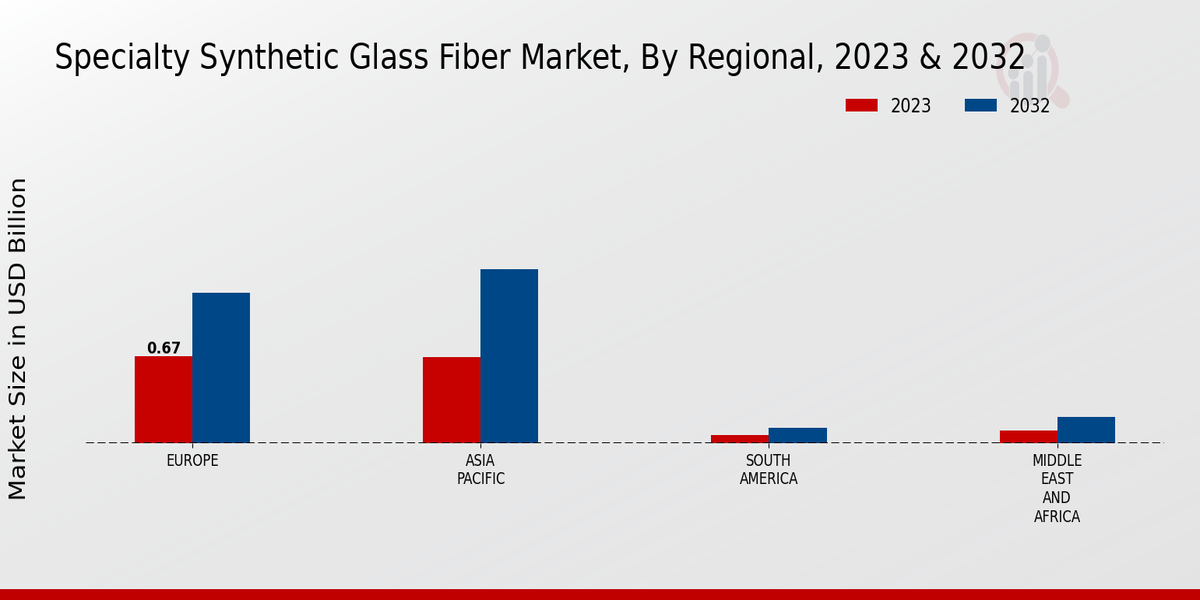Market Growth Projections
The Global Specialty Synthetic Glass Fiber Market Industry is on a promising growth trajectory, with projections indicating a market value of 1.71 USD Billion in 2024 and an anticipated increase to 3.71 USD Billion by 2035. This growth reflects a compound annual growth rate of 7.3 percent from 2025 to 2035, driven by various factors including technological advancements, increased demand in construction, and the rising focus on renewable energy. The market dynamics suggest a robust expansion, with specialty synthetic glass fibers becoming increasingly integral to diverse applications across multiple industries.
Increased Focus on Renewable Energy
The Global Specialty Synthetic Glass Fiber Market Industry is benefiting from the rising emphasis on renewable energy solutions. Specialty synthetic glass fibers are integral to the production of wind turbine blades and solar panels, where their lightweight and durable characteristics enhance efficiency and longevity. As countries worldwide invest in renewable energy infrastructure, the demand for these materials is expected to surge. For example, the global wind energy market is projected to expand significantly, driving the need for advanced composite materials. This shift towards renewable energy not only supports environmental sustainability but also positions the specialty synthetic glass fiber market for substantial growth in the coming years.
Rising Demand in Construction Sector
The Global Specialty Synthetic Glass Fiber Market Industry is experiencing heightened demand driven by the construction sector's growth. As urbanization accelerates, the need for durable and lightweight materials in infrastructure projects becomes paramount. Specialty synthetic glass fibers are increasingly utilized in applications such as concrete reinforcement and insulation, enhancing structural integrity and energy efficiency. This trend is reflected in the projected market value, which is expected to reach 1.71 USD Billion in 2024, indicating a robust growth trajectory. The construction industry's shift towards sustainable building practices further propels the adoption of these advanced materials, suggesting a promising outlook for the Global Specialty Synthetic Glass Fiber Market.
Regulatory Support for Advanced Materials
Regulatory frameworks promoting the use of advanced materials are positively impacting the Global Specialty Synthetic Glass Fiber Market Industry. Governments are increasingly recognizing the benefits of specialty synthetic glass fibers in various applications, leading to supportive policies and incentives. These regulations often aim to enhance material performance, safety, and environmental sustainability. For instance, initiatives encouraging the use of lightweight materials in transportation and construction are likely to bolster the adoption of synthetic glass fibers. As a result, the market is poised for growth, with projections indicating a significant increase in value over the next decade.
Technological Advancements in Manufacturing
Innovations in manufacturing processes are significantly influencing the Global Specialty Synthetic Glass Fiber Market Industry. Advanced techniques such as continuous filament winding and automated production lines enhance the efficiency and quality of glass fiber products. These technological advancements not only reduce production costs but also improve the performance characteristics of synthetic glass fibers, making them more appealing for various applications. As manufacturers adopt these technologies, the market is likely to witness an increase in product offerings, catering to diverse industry needs. This evolution aligns with the anticipated market growth, projected to reach 3.71 USD Billion by 2035, highlighting the importance of innovation in driving market expansion.
Growing Aerospace and Automotive Applications
The aerospace and automotive sectors are increasingly incorporating specialty synthetic glass fibers due to their lightweight and high-strength properties. In the Global Specialty Synthetic Glass Fiber Market Industry, these materials contribute to fuel efficiency and performance enhancement in vehicles and aircraft. For instance, the use of glass fiber composites in automotive components has been shown to reduce weight by up to 30 percent, leading to improved fuel economy. As these industries continue to prioritize sustainability and performance, the demand for specialty synthetic glass fibers is expected to grow. This trend is likely to support a compound annual growth rate of 7.3 percent from 2025 to 2035, indicating a robust market trajectory.




















